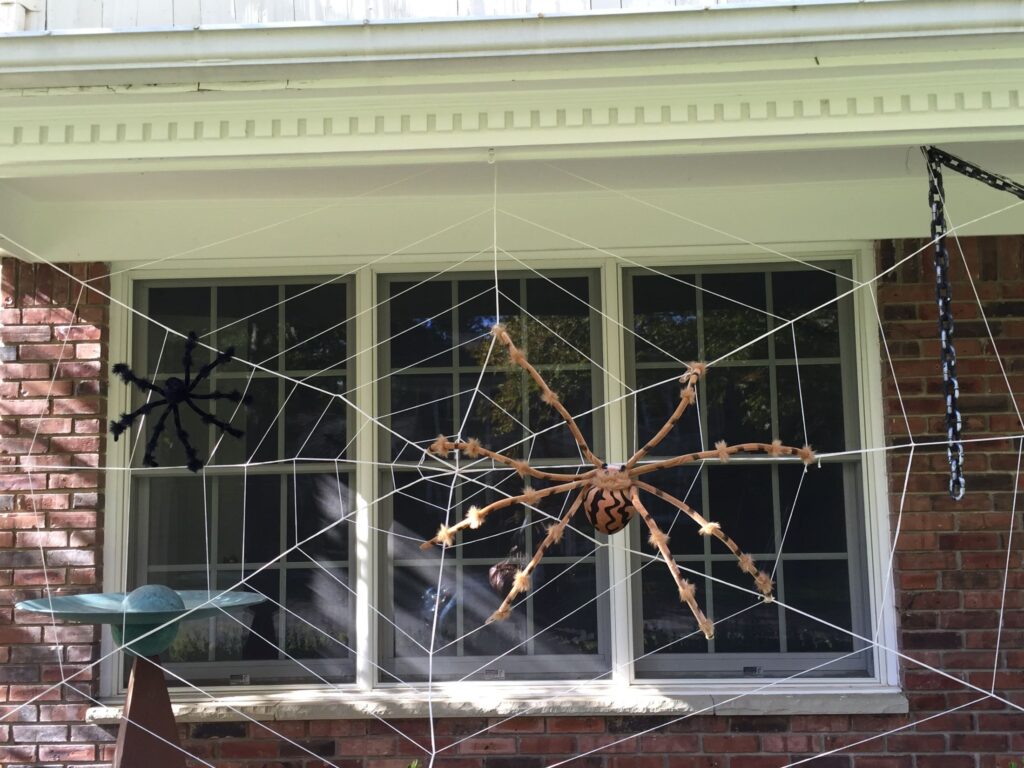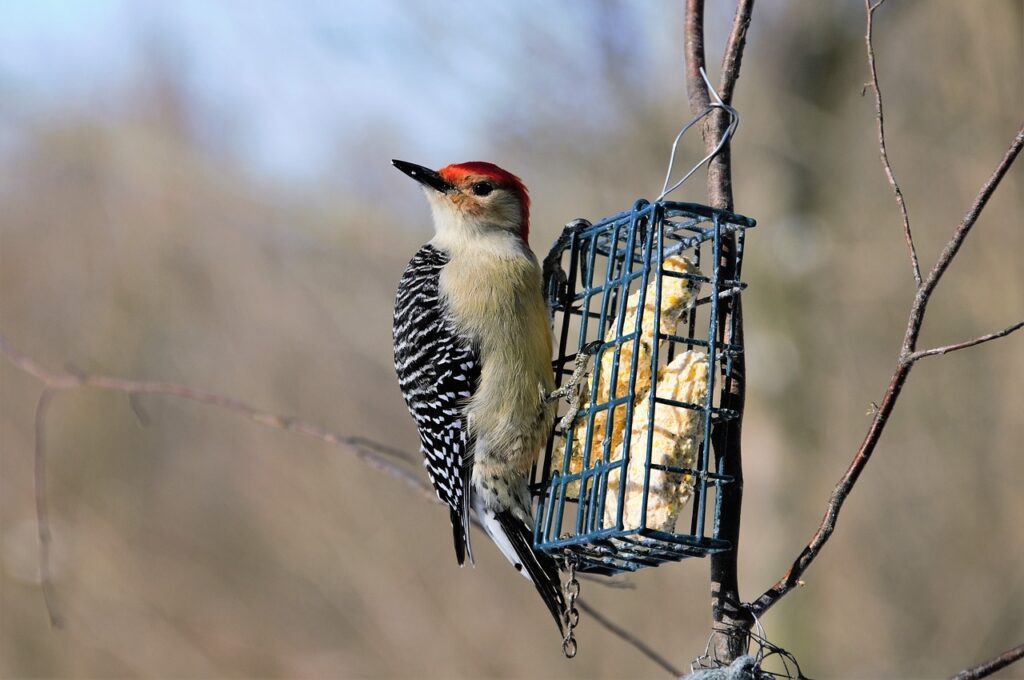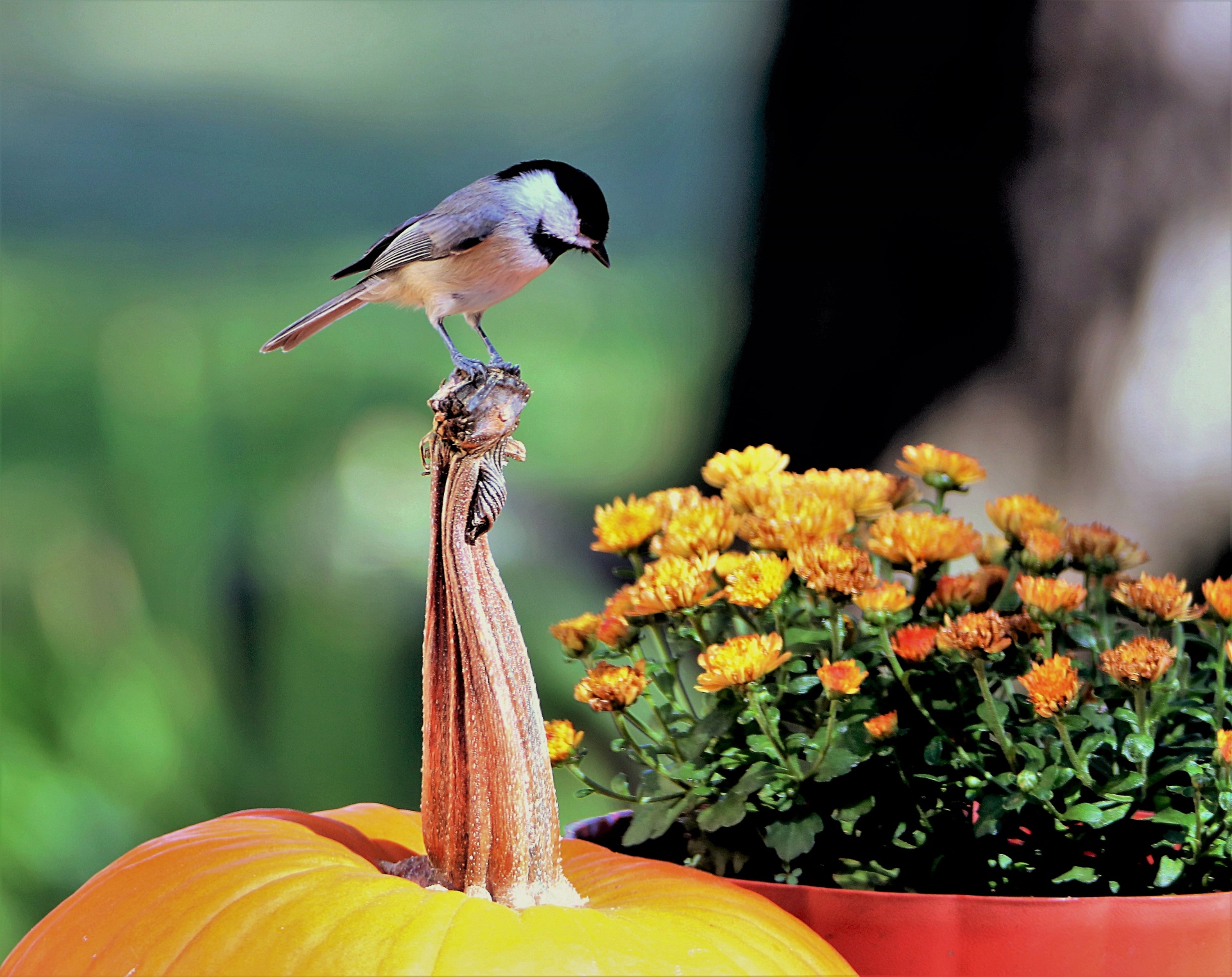We are entering the Halloween season, and you’re probably ready to “spookify” your home. But before you get started, it’s good to make sure your decorations and festivities don’t have scary consequences for your local birds. Here are some bird-friendly Halloween tips on making the most of your holiday.
Double Check Your Decorations

Halloween decorations may be fun for you and the family, but the fact is that some can be dangerous for birds and other wildlife. Fake spider webs can catch curious birds, trapping them with sometimes fatal consequences. This happens because, unlike the real thing, fake spider webs don’t break when a bird passes through. And not just small birds like hummingbirds and songbirds are in danger—these artificial spider webs have even been known to snare owls and other larger birds.
Balloons are another outdoor Halloween decoration to avoid. Birds can mistake them for food, which may end up killing them. They can also get tangled in the balloon strings. The National Audubon Society also cautions against using decorations with artificial plants, string, webbing or netting, or little loops that birds can get caught on. Instead, keep these decorations inside—perhaps in front of your windows so you can still showcase your seasonal spirit. You may even wish to add an autumn-themed window decal or two to help prevent window strikes.
Set Decorative Lights on a Timer

Birds love lights, especially at night, when they can confuse them for bright stars guiding their pathways. Unfortunately, artificial lights—like lamps in a home or lights in a skyscraper—draw birds to windows, sometimes causing injurious, even fatal, collisions. Artificial lights at night can also confuse birds, altering their migration patterns and leading to exhaustion and disorientation.
Now we’re not saying you need to live in the dark for the birds—but just a few little changes could save many bird lives. For instance, placing your outdoor Halloween lights on a timer to go off at a certain time of night will keep birds from flying where they shouldn’t.
Cover and Clean Up Candy

Make sure Halloween candy is kept safely away from curious birds (and pets!). Put candy left out for trick-or-treaters in a covered, or even sealed, container, like Tupperware. Pick up any stray candy and candy wrappers lying around your house, yard, and driveway. Birds like sweet treats too—and especially those wrapped in shiny, colorful wrappers. Unfortunately, most candies include ingredients harmful to birds. And sticky, unwrapped candy left on a sidewalk could stick to, and trap, a bird, so do your best to clean up candy messes around your home.
Feed the Birds a Suet Treat!

Treat your backyard birds to a special Halloween treat by hanging some suet out for them. A bird fan favorite across bird types, suet is a high-fat, high-protein treat that gives birds the strength and energy to migrate, mate, nest, and survive harsh winters. Not only is it considered a bird superfood, but suet is also a great way to attract a wider variety of birds to your backyard. For example, if you want to see more goldfinches, warblers, robins, jays, and nuthatches, hang a suet feeder or two in your outdoor space and get ready to birdwatch.
Turn Pumpkins into Bird Feeders
Repurpose your pumpkins after (or during!) Halloween by turning them into bird feeders. To do this safely, you’ll need to use a pumpkin that hasn’t been treated with bleach or harmful chemicals in order to preserve it. The National Audubon Society has a great DIY pumpkin bird feeder tutorial on their website. Fill the hollowed-out gourd with bird seed, or simply let the birds feast on the pumpkin flesh. You can also leave out the dried pumpkin seeds for an added treat.
Bird-friendly pumpkin preservation: Vinegar is a bird- and wildlife-friendly bleach alternative for preserving pumpkins. Fill a large tube with 10 parts water/1 part vinegar and let your pumpkin soak for about 30 minutes before letting it air dry. It’ll look great and last through the season!
Learn About “Spooky” Birds

From ravens and crows to owls, wild birds are an integral part of Halloween lore. So why not lean in and teach your kids some fun facts about ravens, crows, owls, and birds of prey? Learning about birds and nature makes kids better stewards of the environment. So get your kids out in nature and observe these birds in their element! You can also watch videos about them on the Chirp YouTube channel, and read about them on our blog.
Here are some family-friendly articles to get you started:
- 13 Surprising and Spooky Raven Facts
- All About Owls
- 8 Fascinating Facts about Rad Raptors
- 6 Birds That are Master Mimics
- Do Birds Have Brains?
Scary Bird Facts and How to Help

The really scary thing this season isn’t in the haunted houses you visit or the ghoulish costumes you encounter. It’s in some of the latest scientific research about wild birds and the environment. For instance, did you know that 70 species of birds are at a “tipping point” after losing two-thirds of their populations in the last 50 years? And we’ve lost 1 in 4 birds in the US and Canada since 1970. What can we do to help our birds? Here are some articles that will help:
- How You Can Help the Declining Bird Population
- How Climate Change Affects Wild Birds (and What We Can Do)
- Other Extinction Trends and How They Affect Birds
- Regenerative Wild Bird Habitats: Why Needed and How to Help
- The Ultimate Guide to Creating a Southern California Bird Sanctuary
- What is Rewilding and Why is it Important?
- How to Help Birds Survive Wildfires: FAQs and Tips
- How to Turn Your Garden or Yard into a Certified Wildlife Habitat


